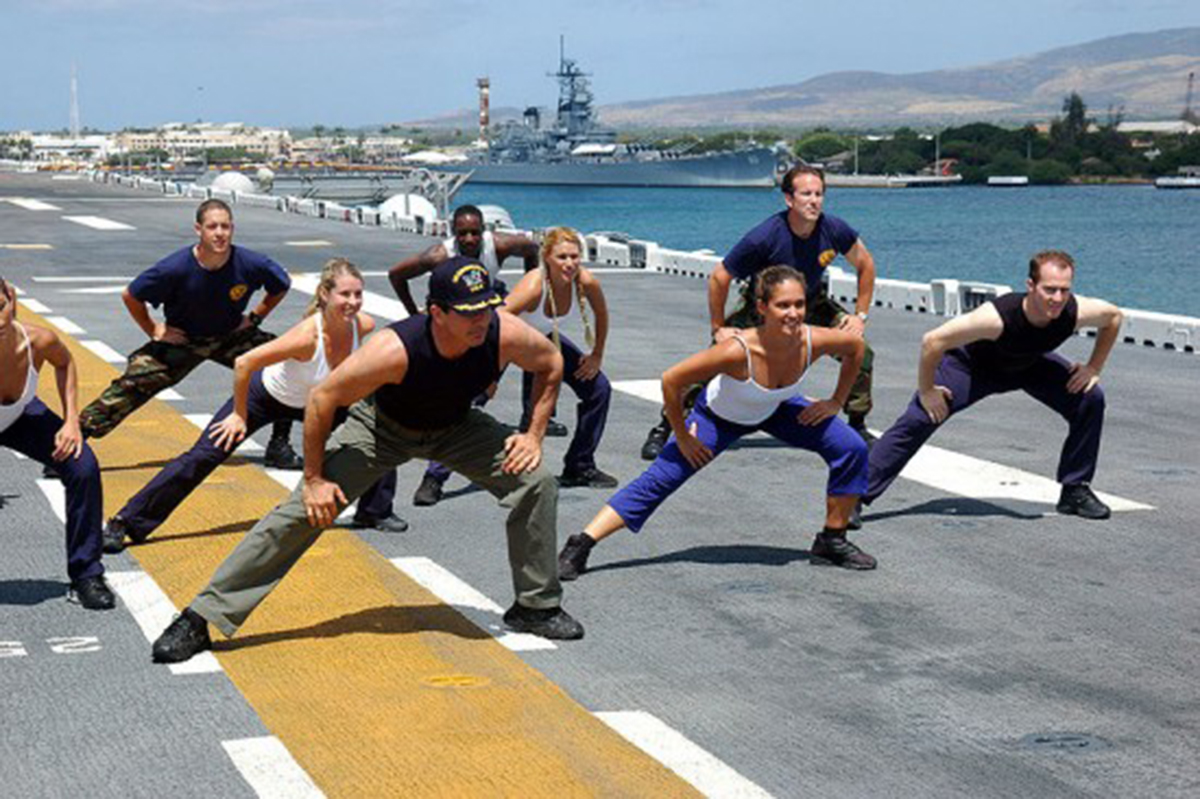Table of Contents
For the athlete:
Bulgarian Split Squats
You’ll hold a weight in the front squat position with your rear foot elevated behind you on a bench, and squat as deep as you can go. If you keep the front shin more or less vertical, you should be able to get the front thigh at least parallel, and the rear leg assists, pressing down against the bench with the hip flexors.

For everyone:
L-sit progressions
At one end of the L-sit progression continuum, there’s tuck L-sits, where you just raise your bend legs to hip height. At the other end we encounter craziness like moving between seated Ls and seated Vs for reps. But anywhere along that continuum is somewhere we can fit in.
Start by sitting on the edge of a sturdy chair. Raise your knees until your thighs are level with your hips, hold for a count of three to five seconds and slowly lower. The key here is to move slowly and with control. Keep you glutes and core braced the whole time. Once that’s easy, gradually work on doing the same movement with your legs extended.
A dip station is perfect for this if you have access to one. If you don’t try hanging from a bar if you have one of those.
Medicine Ball Russian Twists
Sit on the floor with your knees bent and feet lifted off the ground. Hold a medicine ball or weight with both hands and rotate your torso from side to side, tapping the ball on the ground. Perform 10-12 twists on each side. To progress, increase the weight of the medicine ball or perform the exercise with your feet elevated.
Single-Leg Squats
Stand on one leg and lower your body into a squat position, maintaining balance and control. Push back up through the heel and repeat on the other leg. Aim for 8-12 reps on each leg. To progress, hold dumbbells or a kettlebell for added resistance or perform the squats on an unstable surface, such as a Bosu ball or foam pad.
Go through the same progressions as outlined above – just be prepared for them to be a lot harder!
When you can do full extension L-sits you can try adding additional weight. You really don’t need much, a few pounds makes a massive difference. Even the shoes you wear can make the difference between being able to do the move and missing it.
Read More: Full Extension Or Limited Range Push-Ups?
Try to stretch your hip flexors most days. Most of us have over-tight hip flexors and regular stretching will let you use them at their natural length, then your posture will adjust and keeping them functioning well will be easier. Build your hip flexor strength moves into your training sessions – try super-setting them with a glute dominant move like deadlifts or bridges!
- Mindmap by steadyhealth.com
- Photo courtesy of U.S. Navy photo by Storekeeper 1st Class Blaine W. Smith by Wikimedia Commons : simple.wikipedia.org/wiki/File:US_Navy_060627-N-5290S-097_Gilad_of_the_Fit_TV_show,_Bodies_in_Motion,_films_a_show_aboard_the_amphibious_assault_ship_

